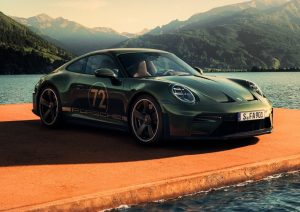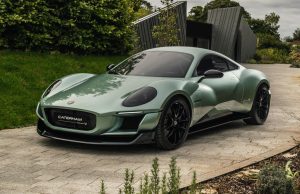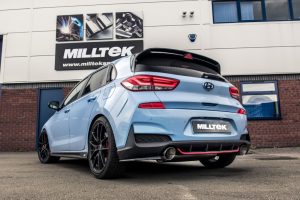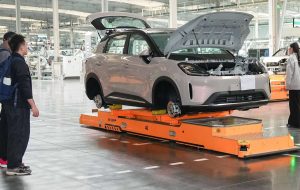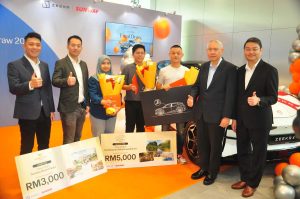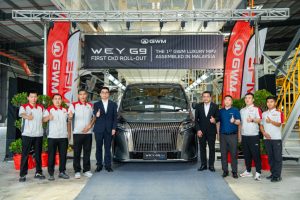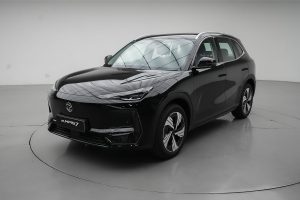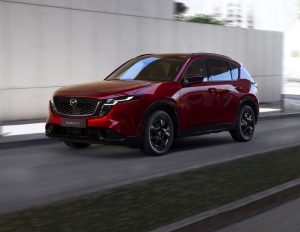Having RM650K in hand opens up a world of possibilities.
It’s seed money for a business or cash down for a dream property.
For those inclined to splurge on luxuries, an expensive automobile could be the object of indulgence.
As a matter of fact, that stash gets you the Mercedes-Benz EQS 500 liftback if a car tickles your fancy. An electric one at that.
The EQS is often considered the electric counterpart to the flagship S-Class.

Its design is a radical departure from the usual range of the German automaker. The “one-bow” design adapts the look of the coupe-like Mercedes CLS and takes it to a new level.
The car is for a new set of buyers or “forward thinkers” — as Mercedes calls them — who are adventurous and open to trying new things. They also need to be rich, of course.
The egg-shaped design is basically for aerodynamic purpose and to enlarge the cabin. The slipperier-than-eels body results in a drag coefficient of 2.0, which makes the EQS the most aerodynamic production car in the world - and the one to beat by rivals.

Truth be told, the shape hasn’t endeared it to the core customers of Mercedes, leading it to suggest future EVs could follow the styling cues of the Concept CLA model or other future cars to come.
The EQS first arrived as a fully imported model in 2022. And those willing to wait were rewarded six month later with the locally assembled version priced at RM648,888, a savings of RM50,000.
Equipment list has also changed. Compared to the EQS 450+ it replaces, it gets two electric motors instead of one in the earlier car, resulting in an all-wheel drive car that has much more power for a quicker sprint time.
The sporty AMG Line package of yore and the 21-inch wheels have been replaced by Electric Art Line interior and exterior with wheels that are now an inch smaller. Range is also cut to 696km from 782km, but that’s still plenty and no one is going to argue the loss.

As it stands, the EQS cuts a sleek and sporty silhouette, characterised by a low and slim front that merges into a coupe-like profile.
The cab-forward design maximises interior space while maintaining a striking exterior aesthetic, with shortened overhangs and a smoothly rounded rear.
The front fascia features a distinctive Mercedes-Benz pattern on the Black Panel grille, paying tribute to the brand’s heritage.

The Digital Light headlights are connected by a light band, a pattern that’s repeated in the back where a continuous light bar extends to the LED lamps, which feature a unique 3D helix design, creating a ultra-modern visual effect.
The aerodynamic silhouette is accentuated by frameless, coupe-like doors and high, arched beltline, with chrome accents highlighting key design elements. Standard features include flush door handles and a panoramic sliding sunroof.

The cabin is no less luxurious featuring ventilated seats in Nappa leather with quilted stitchings. A number of soft touchpoints add to the sense of refinement.
Certainly the thing that will draw the most attention is the massive MBUX Hyperscreen that stretches almost across the entire dash.
The MBUX Hyperscreen - essentially three displays under a glass panel - is Mercedes’ idea of high digitisation for the interior.
The ultimate widescreen sets the tone for the entire cockpit and interior conferring an avantgarde vibe.

However, the wide expanse of glass surface is also an Achilles heel, as it collects dust and fingerprint easily. Ditto the glossy black plastic on the steering wheel, centre console and rear centre armrest.
Seats are generally comfortable and supportive, with rear seats being electrically adjustable and reclinable.
Legroom is abundant. But because of the sloping roof and the big battery under the floor, tall passengers will find headroom and thigh support somewhat lacking.
The EQS loses out to the S-Class in omitting a legrest for the rear left seat as well as having no rear windscreen shade or side window roller blinds.

Apart from that, an inner rubber lining of the outer driver’s door handle came loose during the test drive. Not good, Mercedes.
Rear passengers are treated to two additional screens in front of them and a Samsung tablet screen for control of selected car functions and infotainment. Two wireless headsets also come standard for passengers to enjoy audio piped in from the Burmester 3D hi-fi system.
At 610l, the boot has gobs of storage, making this a practical car. Note its liftback nature as the rear windscreen is lifted up as well when the tailgate is opened.

Like the EQE, the EQS doesn’t have a frunk.
Safety-wise, it gets various driver assistance systems to keep ocupants out of trouble. They include blind spot detection, autonomous emergency braking, adaptive cruise control and lane centring assist, among others.

Put together two electric motors juiced up by a 108.4kWh Li-ion battery, and you are looking at an impressive turn of speed for a 2.5-tonne car.
The motors pumped out 443hp and 828Nm of torque to enable the EQS to sprint from 0-100kph in 4.8s.
It can keep going till a top speed of 210kph.
Its instant torque allows it to take off from a traffic stop with great verve, putting most cars on the road in the shade.

Out on the highway, the ride is tuned for comfort and it’s all quiet and calm even at speeds.
Because of the fairly soft suspension in Normal mode, some amount of body roll is felt in the bends.
In Sport mode however, the ride firms up for an athletic drive with less wallow accompanied by thematic sound pack to get the driver in the mood.
With its rear-wheel steering ability, the EQS is highly maneouvrable at low speed, useful when it comes to parking in tight spaces.
Move it along and the rear-wheel acrobatics provides greater stability, a benefit that also helps the car change directions more instinctively.

The paddle shifters are by default levers to set different levels of regenerative braking.
If you have switched over from driving combustion engine car, the braking will take getting used to.
Under regenerative braking, the brake pedal may move, giving the sensation of it being halfway pressed if applied after lifting off the go pedal. This can be unsettling before your foot actually steps on the pedal.

Some either get used to it or switch it off .
Average energy consumption was 20.8 kWh/100km after we were done with the car with 70% mostly highway driving and the occasional pedal-to-the metal hijinks.

One can’t help but think the EQS 500 is a mixed bag.
It has lots of things going for it but Mercedes-Benz has yet to nail it down to win across-the-board plaudits.
Furthermore, it’s up against pretty tough competition from the all-electric BMW i7.
But as in any product, lux or otherwise, the first one out is always an experimental exercise in the marketplace, and should get better with further refinements.
SPECIFICATIONS
Mercedes-Benz EQS 500 4Matic (V297)
Electric motor: Permanent Magnet Synchronous Motor, dual motor
Maximum power: 449hp
Maximum torque: 828Nm
Battery capacity & type: 108.4kWh, Lithium-ion
Range: 696km (WLTP)
Charger Type: CCS (DC), Type 2 (AC)
Transmission: Single Ratio Automatic
Features: 11 airbags, all-wheel drive, panoramic sliding sunroof, Digital Light, rear axle steering, Dynamic Select, pedestrian protection, Electric Art exterior and interior, ambient lighting, Comfort Seats, multifunction steering wheel in nappa leather, Air Balance package, seat heating Plus for driver and front passenger seats, Nappa leather upholstery, power front seats with memory function, Keyless-Go, hands-free access, Rear Seat Package Plus, electrically adjustable rear seats, MBUX rear tablet, wireless charging system for rear mobile devices, automatic climate control, Easy-Pack tailgate, Mercedes-Benz emergency call system, MBUX Hyperscreen, fingerprint scanner, Oled front passenger display, Parking package with 360-degree camera, Active Parking Assist, Mirror package, MBUX augmented reality for navigation, Pre-Safe impulse side, interior monitoring system, MBUX High-End Rear Seat Entertainment System, 2 wireless head sets,
Apple CarPlay and Android Auto support, Burmester 3D surround sound system, head-up display, tyre pressure monitoring system, 20-inch alloy wheels with tyre repair kit, ABB Terra AC Wallbox with tethered cable (including standard installation)
Normal charging (AC): 11kW, 0-100% in 10 hours
Quick Charging (DC): 200kW, 20%-80% in 31 mins
Suspension: Multi Link with air suspension, adaptive damping
Acceleration (0-100kph): 4.8s
Top speed: 210kph
Kerb weight: 2,480kg
Boot capacity: 610l
Price: (OTR without insurance): RM648,888.


































